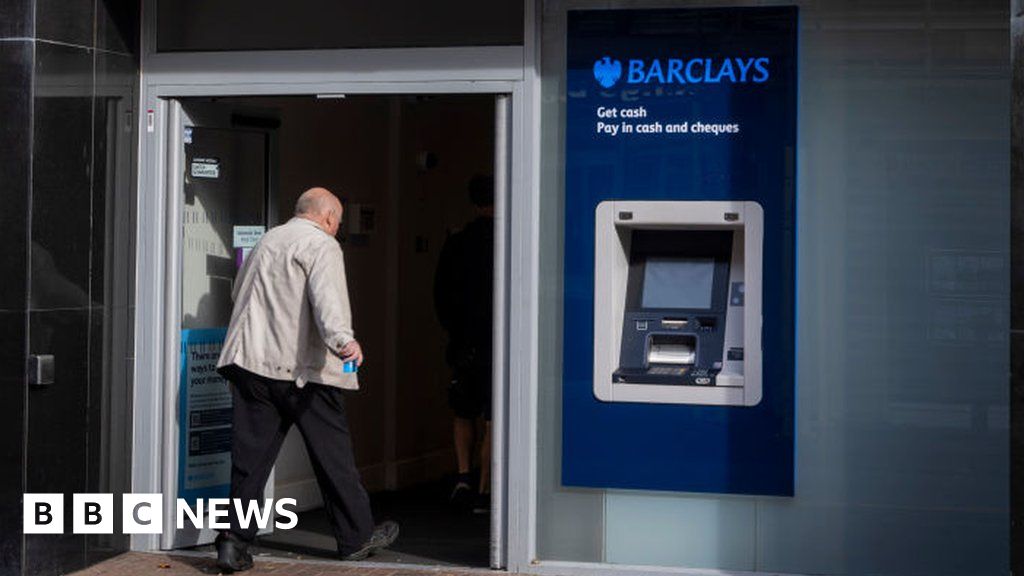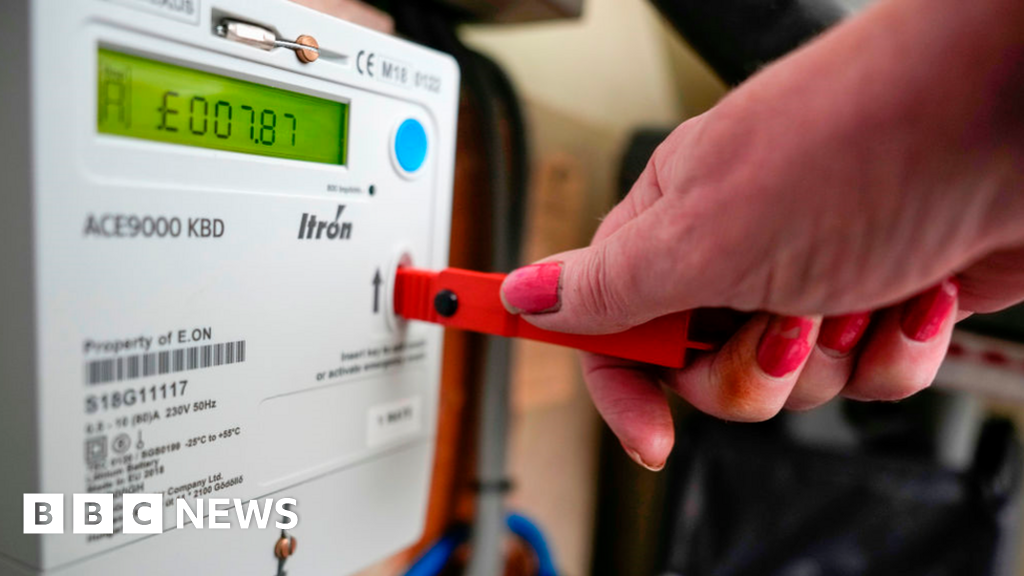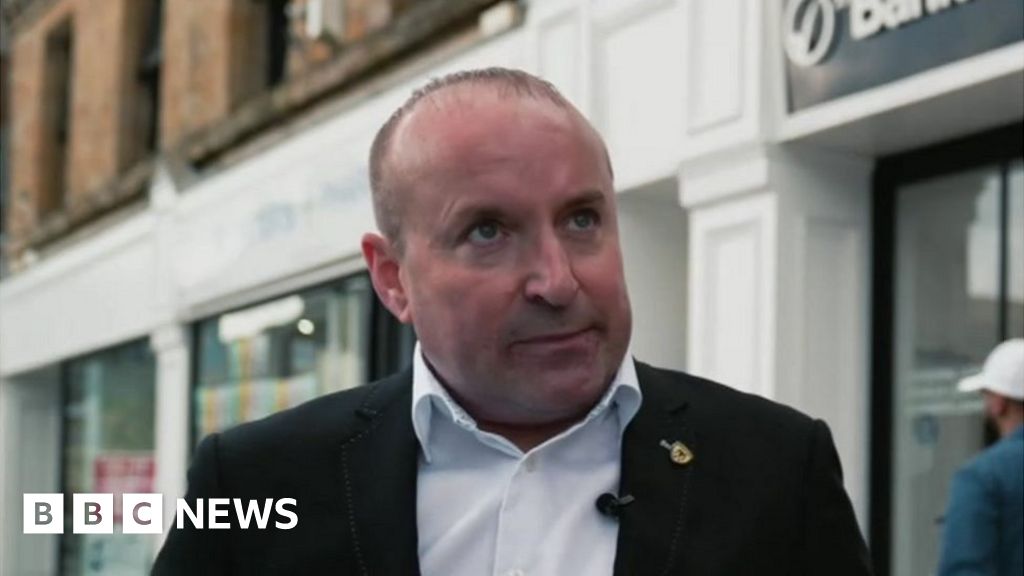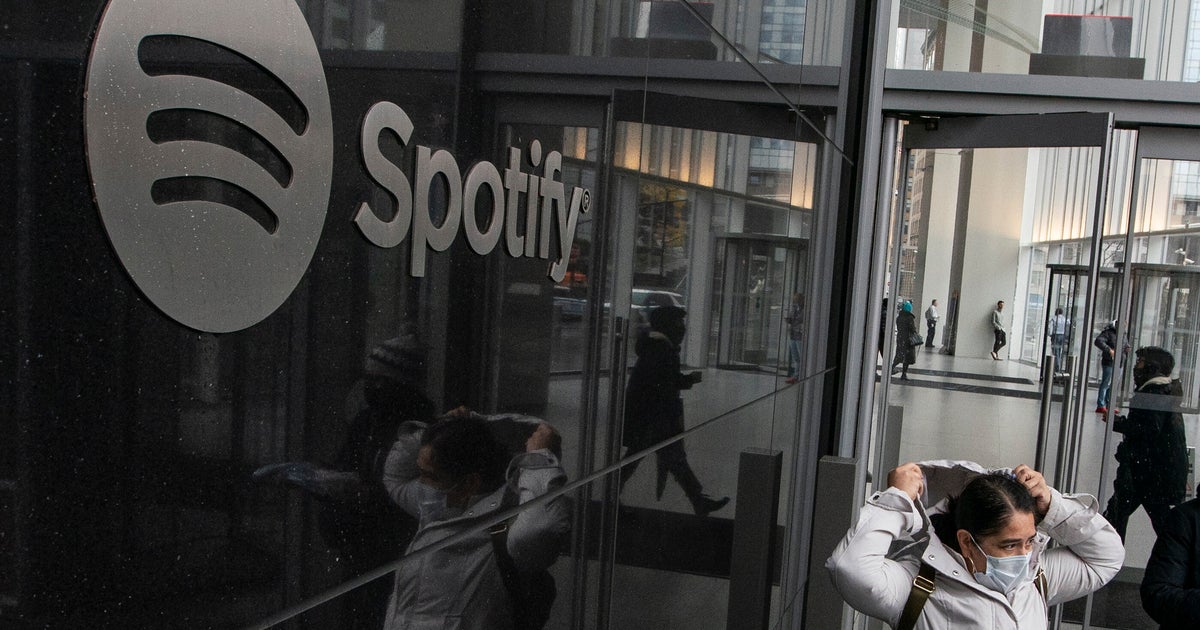Trump promises to stop inflation. But would his plans actually help?
Trump’s enormously disruptive policy proposals come as he appears likely to jettison the more cautious and establishment-friendly economic advisers that restrained his most nationalist and confrontational impulses during his first term. These advisers — such as former treasury secretary Steven T. Mnuchin — now find themselves either at war with Trump or receding from his inner circle, potentially empowering more fringe voices.
As president, Trump turned on his own pick to lead the Federal Reserve, Jerome H. Powell. If he returns to the White House, Trump would likely move to replace Powell with an appointee more inclined to lower rates and follow Trump’s whims — which Powell refused to do — according to Fed experts, economists and other people in Trump’s orbit. It’s not clear how such an intervention at the central bank might affect financial markets or the economy; the Fed is tasked with controlling inflation without taking politics into account, but an all-out barrage from Trump may test the central bank.
“I worry there’s not going to be an effective policy check on him. The circle has narrowed so much that in the second term he may hear no dissent, even at the outset,” said Doug Holtz-Eakin, a GOP analyst who served as chief economic policy adviser to Sen. John McCain (R-Ariz.). “And if he really does the trade and immigration proposals he’s discussing, it would be a very big deal — you hope that by then inflation would be under control and you wouldn’t get a wage-price spiral, but there’s no guarantee.”
Trump’s exact intentions on the economy remain hard to predict, in part because his trade proposals as stated would likely prove so unwieldy and painful for U.S. consumers that even some of the former president’s allies say they are unlikely to ever fully go into effect. But they fit a broader pattern of Trump seeking to harness sweeping new executive powers to pursue what critics have termed an “authoritarian” agenda — even as attacking Biden over inflation remains one of his central campaign messages.
If elected, Trump would inherit an economy that has proved surprisingly strong but still remains vulnerable to new shocks. Although voters give the former president higher marks for his economic stewardship than they do Biden, many analysts fear that Trump’s approach — intensifying the impulsive and chaotic management of his first term — could further unsettle an economy still finding its footing after the disruptions of the pandemic.
“The problem is what he’s proposing is so far outside historic experience there’s not even a decent set of estimates about it,” said Michael Strain, an economist at the American Enterprise Institute, a center-right think tank. “I saw some clip where Trump was attacking Biden about inflation, and it’s like, ‘You’re going to massively restrict the supply of workers and do a 10 percent across the board tariff?’ On the economics, that’s completely insane.”
The Trump campaign referred comment to Kevin Hassett, who served as chair of the White House Council of Economic Advisers under Trump but is not an adviser to the campaign. Hassett argued that Trump’s other policy proposals — including laxer energy regulation and extending the 2017 GOP tax cuts — would reduce inflation by more than his other policies would increase it. (Many economists believe tax cuts increase inflation, by boosting demand.)
“The three biggest effects on inflation from the proposals on the table are from tax cuts, deregulation, and expanded energy production, followed closely by big reductions in government spending. Those four effects would dwarf the effects of any other policy proposals,” Hassett said. Hassett said it is common for politicians’ policy proposals to have varied effects on inflation. “Every presidential candidate in my adult life has put forward a portfolio of policies, and the portfolio of policies won’t necessarily all have the same sign effect on any variable.”
Global trade war could raise prices
During his first term, Trump declared that trade wars “are good, and easy to win,” and ran his presidency accordingly. He imposed tariffs on more than $300 billion worth of imports, leading to retaliatory measures from China, Canada, Mexico and numerous other countries that the former president decided to fight. The Tax Foundation, a conservative think tank that opposes tariffs, found the Trump tariffs — most of which were kept in place by the Biden administration — reduced long-term wages by 0.14 percent and employment by 166,000 jobs.
Despite their destabilizing effects, Trump has vowed to massively ratchet up these trade battles in his second term. He has floated imposing a blanket 10 percent tariff on all imports to the United States, in what he characterizes as a “ring” around the U.S. economy. That would amount to tariffs on more than $3 trillion in annual imports — a more than ninefold increase in the volume of trade hit by tariffs from his first term. Trump also pushes a separate proposal to impose tariffs that would automatically match U.S. import duties to foreign countries’ tariffs on products from the United States, which would also amount to a sharp spike in trade barriers.
Both proposals would almost certainly lead to a major expansion of trade hostilities, which would mean not only higher prices for U.S. consumers but also make it harder for domestic producers to sell into foreign markets.
“When companies come in and they dump their products in the United States, they should pay, automatically, let’s say a 10 percent tax,” Trump said on Fox Business this summer. “I do like the 10 percent for everybody.”
He has continued to cite his tariff plans multiple times while campaigning, telling a crowd in New Hampshire last month: “We will impose stiff penalties on China and all other nations as they abuse us.”
Even some Trump allies recognize such moves would likely raise inflation.
Casey B. Mulligan, who served as chief economist for Trump’s White House Council of Economic Advisers, estimated in an interview that Trump’s 10 percent import tariff proposal would add an extra percentage point to inflation, or a quarter percent a year if spread out over four years. The Federal Reserve has been trying to wrestle inflation down from four-decade highs to the more normal level of 2 percent. While the Fed has made significant progress, they are far from declaring victory, and routinely caution that any number of threats could upend their fight. (A new policy that adds a quarter-point per year would be one such threat.)
Some estimates are even higher. Adam Posen, president of the Peterson Institute for International Economics, a Washington-based think tank, estimates that Trump’s 10 percent tariff plan would increase the overall consumer price index by two to three percentage points, which would amount to roughly doubling the current pace of inflation.
Mulligan, who is a member of the board of academic advisers for the America First Policy Institute, echoed Trump’s arguments that tariffs are a useful economic tool to force China to change its behavior without having to resort to military measures.
The Trump campaign referred comment to Robert E. Lighthizer, who served as Trump’s trade ambassador.
“The economists’ ideas don’t bear out in the real world,” Lighthizer said. “Sometimes it has literally zero effect and sometimes it has a small effect.”
Lighthizer pointed to the estimates by the Coalition for a Prosperous America, a group that supports higher tariffs. That group found that a 10 percent universal tariff would increase inflation-adjusted incomes by 11 percent but also increase inflation by 3.8 percent over about five years.
During his first term, Trump’s protectionist impulses were restrained in part by some Republicans in Congress who have since retired. “I certainly feel like our wing is ascendant,” said Sen. J.D. Vance (R-Ohio), a leader of the upper chamber’s Trump backers. Vance replaced retired Sen. Rob Portman (R-Ohio), once one of Congress’s strongest free trade proponents. “I think that’s because the substance [suggests] that people like Bob Lighthizer were right all along, and people like Trump were right all along.”
Deportations may exacerbate inflation
Speaking to a crowd in Iowa in September, Trump said that he is planning “the largest domestic deportation operation” in U.S. history if elected again. The former president has talked of wanting to forcibly deport millions of immigrants, echoing a 1950s enforcement campaign targeting Mexican field workers.
In his first administration, such impulses were often checked by pro-business figures who feared the impact of Trump’s immigration restrictions on the workforce. But Gary Cohn, who had been president of Goldman Sachs before helming Trump’s White House National Economic Council, fell out with the president early in the administration. Jared Kushner, the president’s son-in-law who sometimes had a moderating force on his economic policies, has thus far played little role in the 2024 campaign. Mnuchin, Trump’s treasury secretary, is not seen as likely to return to Trump’s Cabinet, after he explored using the 25th Amendment to remove Trump from office following the Jan. 6, 2021, insurrection, according to three former Trump administration officials, who spoke on the condition of anonymity to describe sensitive dynamics.
“One of the major differences between now and 2017 is in 2017 he pulled together a coalition that included most of the folks on the right and the business community from New York, which acted as a moderating voice,” said Paul Winfree, an economist who served as director of budget policy during the Trump administration. “A lot of the folks who acted as moderating influences have distanced themselves from Trump.”
This change in personnel could leave Trump free to pursue a mass deportation campaign regardless of its impact on businesses. Although economists are divided on whether restricting immigration would meaningfully increase inflation overall, many economists say mass deportations — beyond their devastating effect on individual lives and communities — would also almost certainly cause price spikes in particular sectors. Labor shortages would quickly emerge in residential construction, housekeeping, and agricultural work, particularly for fruit and other laborious forms of farm work, said Posen, the PIIE economist, driving up costs for consumers.
“It would lead to very sudden spikes in prices of key goods like fresh produce, hotel rooms, and housing repairs,” Posen said.
More than 37 percent of meat and poultry workers are foreign-born, according to estimates by the Economic Policy Institute, a left-leaning think tank. Mass deportations could have a devastating impact for businesses in states like Iowa, though Trump is expected to win there handily both in the caucuses and in a general election.
“This would severely impact the ability of the meat and poultry industry to be able to produce the amount of meat and poultry we’re used to in this country. We’d have shortages, which would increase prices,” said Debbie Berkowitz, a fellow at the Kalmanovitz Initiative for Labor and the Working Poor at Georgetown University.
Trump has demonstrated disdain for the central bank
The sun was shining over the Grand Teton mountains when Powell took to the podium in August 2019 to deliver his most important speech of the year. At the closely watched policy forum known to Fed watchers simply as “Jackson Hole,” Powell said the economy was in a “favorable” place but was susceptible to “significant risks,” especially from the ongoing trade fight between the United States and China.
That’s when Trump fired off a scathing tweet: “My only question is, who is our bigger enemy, Jay Powell, or Chairman Xi?” The jab — which followed months of Trump practically demanding the Fed to lower interest rates — sent financial markets tanking.
Even now, the story is a cautionary tale about what Trump’s reemergence could mean for the central bank. Officials have been laser-focused on wrestling inflation down to normal levels, staying steadfast in their pledge to bring down inflation at any cost. Policymakers routinely say that letting prices keep increasing rapidly would make households and businesses worse off in the long run than raising interest rates has.
As long as Powell remains chair, the Fed is almost certain to remain impervious to political interference. “Jay Powell would get a few more wrinkles on his face,” said David Beckworth, senior research fellow at the Mercatus Center at George Mason University. “But at the end of the day, Jay Powell would stick to the mandate Congress has given them.”
But a second Trump term could still at least test the central bank’s independence. Trump is unlikely to reappoint Powell to a third term when his current one expires in 2026 (Biden appointed Powell to a second term that began in 2022). Trump might even try to fire the Fed chair before then — something that has never been tried in the central bank’s history — and replace him with someone who more closely follows the White House’s demands. The legality of such a move is untested.
Either way, Trump would almost certainly choose a new Fed chair to follow Powell. And if elected again, Trump would also have the chance to appoint up to three other leadership positions for the Fed board.
If Democrats retain control of the Senate, they could prevent Trump from stacking the Fed with his acolytes, as they did in rejecting Trump’s 2019 attempt to elevate the pizza magnate Herman Cain to the board. But if Republicans take the majority, Trump could remake the central bank, particularly because some of the GOP officials who resisted his previous picks, such as former senator Patrick J. Toomey (Pa.), have since retired.
“The most successful economic institution in this country is the Fed; we have just seen how their independence and their credibility can work economic miracles,” said Jason Furman, a Harvard economist who served in the Obama administration and stressed Trump could only influence the Fed if he fired or replaced Powell. “If Trump undermined their independence and their credibility — which he has proven he is quite likely to try to do — that could make it very difficult to keep inflation under control.”
Judy Shelton — one of Trump’s five failed Fed nominees — said the Fed’s plans to cut rates again this year after raising them through 2022 and 2023 validate Trump’s belief that the economy can sustain low rates, low unemployment and low inflation all at the same time. (Typically, economists assume that low unemployment drives inflation up as wages rise, requiring higher rates that curb demand.)
“I really think that it vindicates the Trump administration’s position that low unemployment and economic growth — so long that it’s productive — are not inherently inflationary,” Shelton said. “I think what Trump is mentioning these days is he’s concerned both about inflation and about the high cost of borrowing for individual citizens.”
But other economists caution that the Federal Reserve is supposed to be independent for a reason: The central bank must be willing to tackle inflation even if it causes short-term political pain for the nation’s elected leaders. Trump has demonstrated his priority is preserving his own power, regardless of the costs to the Federal Reserve’s credibility.
“Trump has made it very clear he wants to literally run everything, and he doesn’t give a damn about central bank independence,” said Dean Baker, a White House ally and economist at the Center for Economic and Policy Research, a left-leaning think tank. “If Trump is in the White House, the Fed is very likely to not have a free hand to fight inflation if they need to.”
Rachel Siegel and Jacob Bogage contributed to this report.









